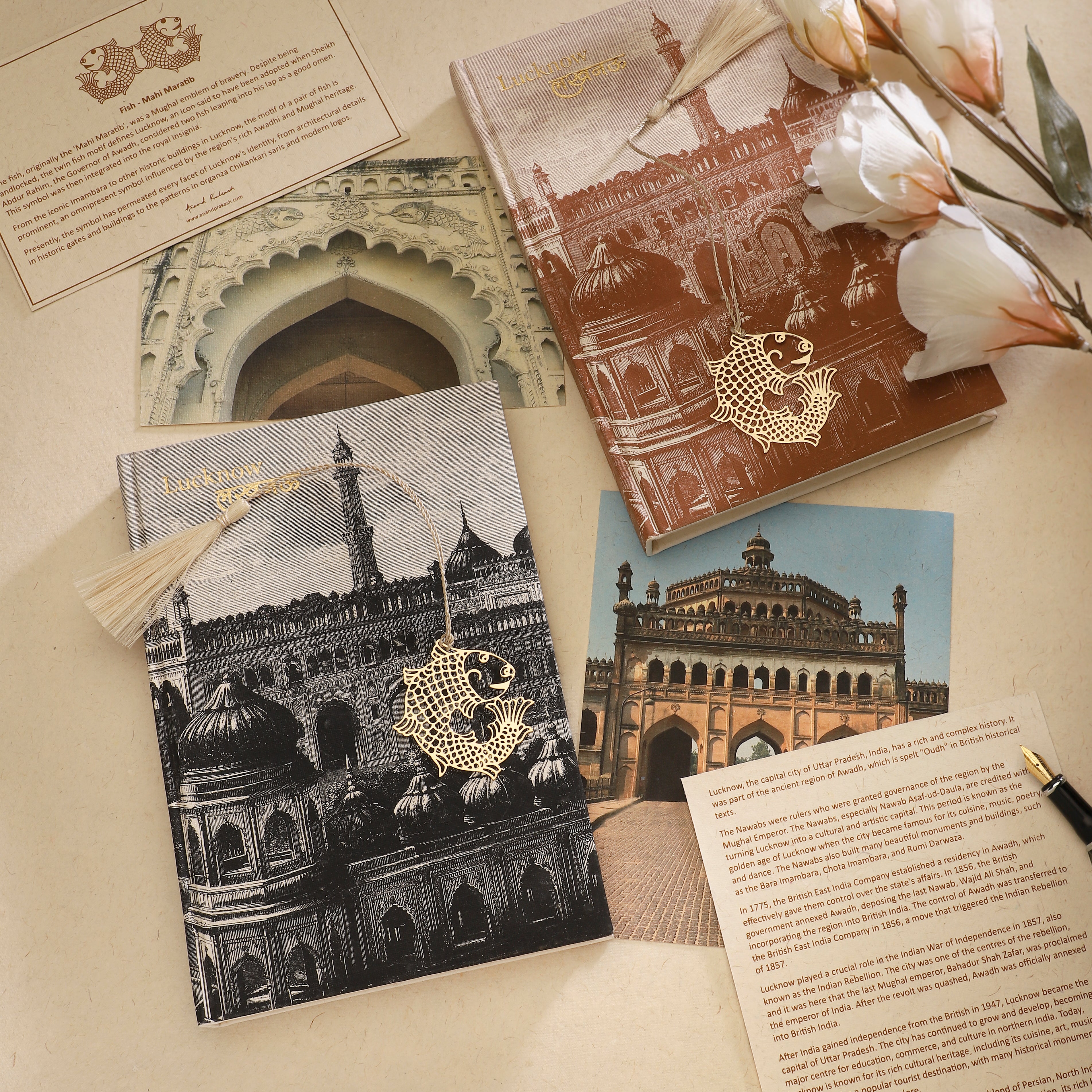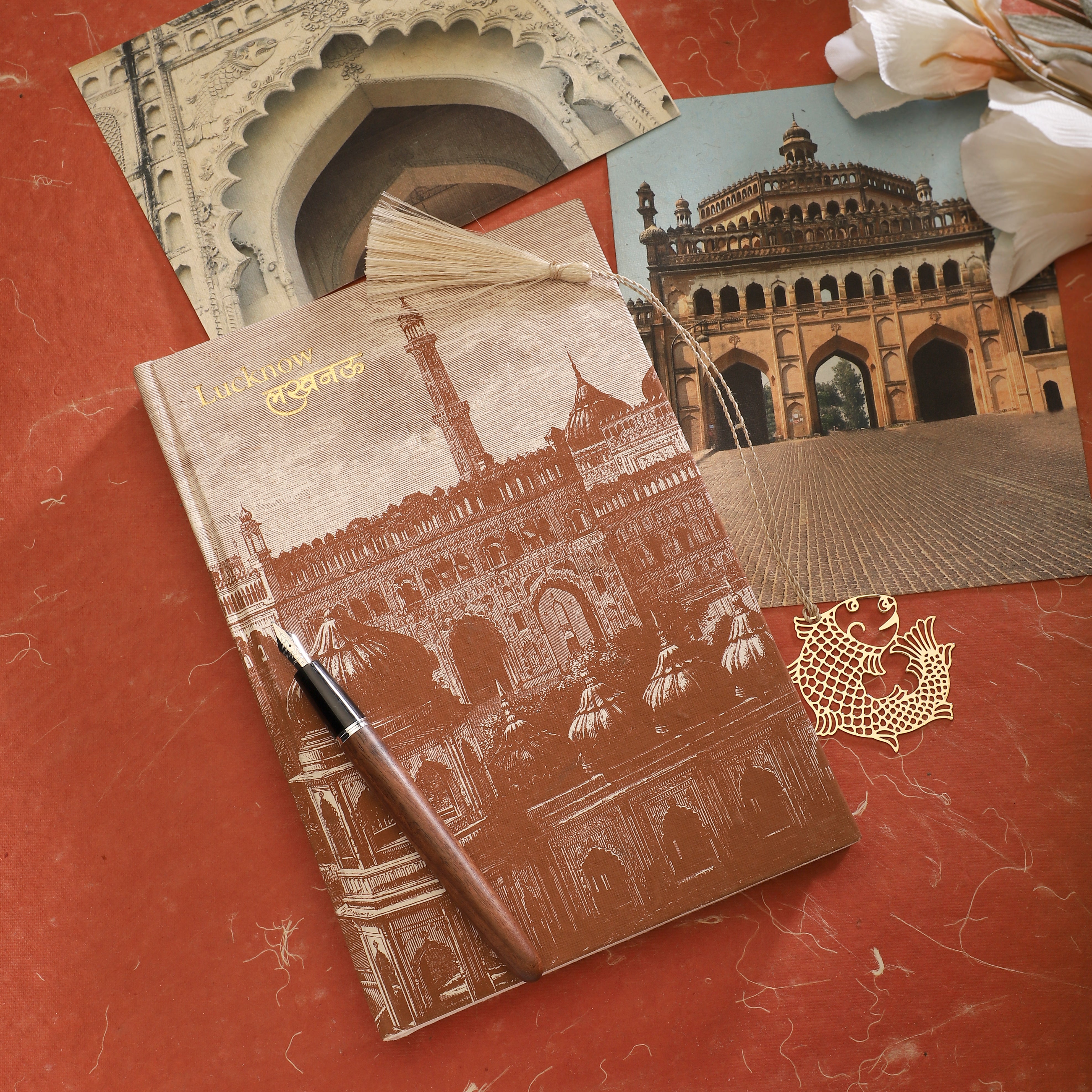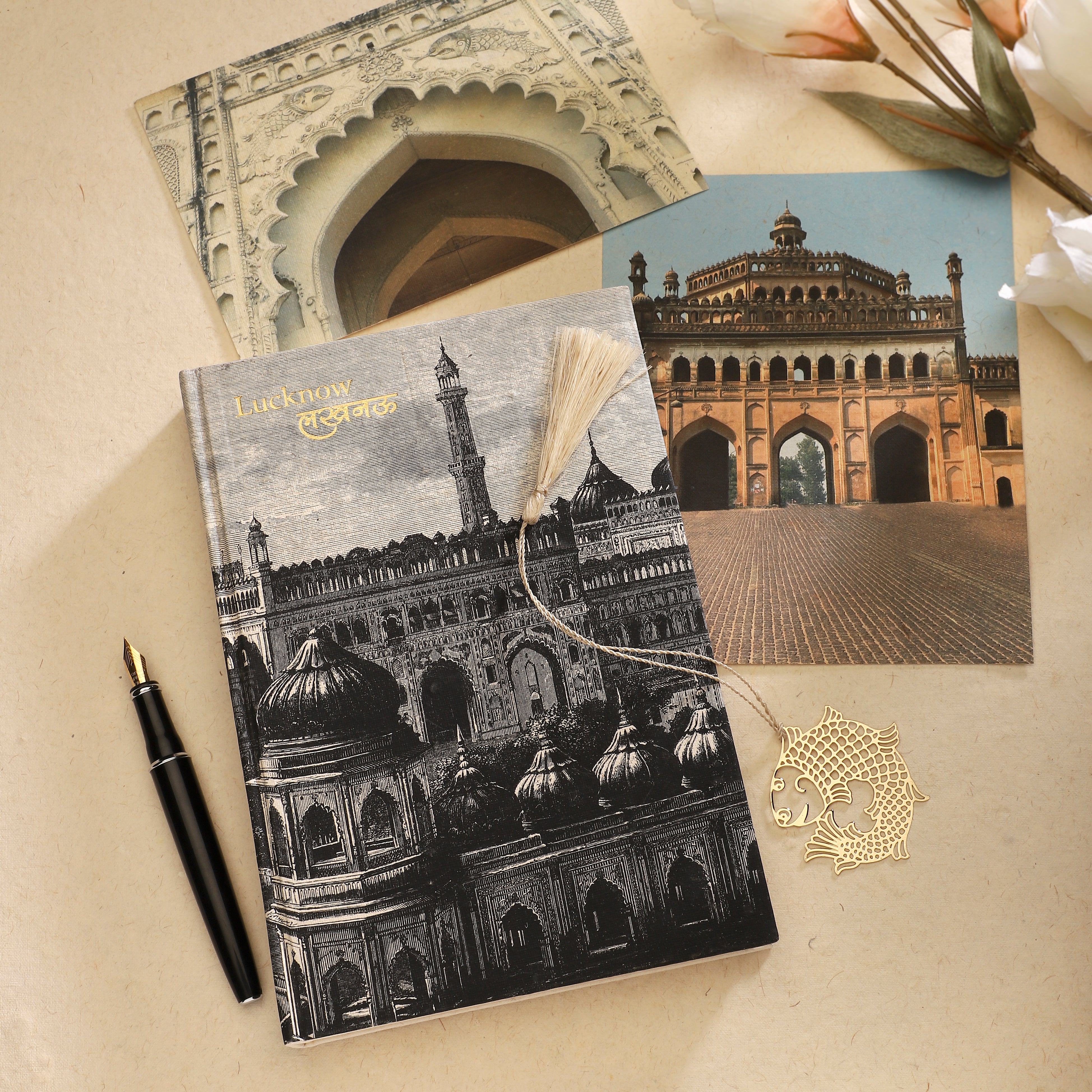Description
Immerse yourself in Lucknow's timeless charm with this Lucknow City Cover—Hardbound Journal. Crafted with meticulous attention to detail, this journal celebrates heritage and sustainability, making it the perfect companion for your thoughts, notes, or creative writing.
Key Features:
-
Handstitched Woodfree and Recycled Paper: The journal is made from high-quality, handstitched paper that is both woodfree and recycled, reflecting Anand Prakash’s commitment to sustainability without compromising on elegance. The pages are smooth and ideal for writing, drawing, or sketching.
-
Handprinted Vintage Imambara Drawing Cover: The cover is bound in luxurious paper and features a vintage drawing of the Imambara, one of Lucknow’s most iconic architectural marvels. The detailed illustration is a homage to the city’s rich cultural and artistic history, making this journal a true work of art.
-
Fish Motif Bookmark: The journal includes a beautifully crafted brass bookmark in the shape of a fish, inspired by the 'Mahi Maratib' , an emblem of the Nawabs of Lucknow. This elegant bookmark not only adds a royal touch but also represents prosperity and heritage, making it a meaningful keepsake.
Whether you are journaling your travels, capturing daily reflections, or planning creative projects, the Lucknow City Themed Hardbound Journal by Anand Prakash is a unique blend of tradition, sustainability, and craftsmanship. It’s more than just a notebook—it’s a tribute to the cultural grandeur of Lucknow, perfect for those who appreciate both artistry and functionality.
- Cover: Vintage Imambara image screen printed on recycled paper
- Paper: 100% recycled, wood free handmade paper sourced from rural units
- Page type: Blank, hand-stitched
- Paper texture: Rough, handmade
- Writing: Use a ballpoint pen, pencil or gel pen
- Pages GSM: Approximately 120 gsm
- Pages: 144 pages (72 leaves)
- Metal bookmark: Fish motif
- Size: A5
- Dimensions: Journal - 14.80 x 20.50 cms
- Bookmark - 5.20 x 5.40 cms
Lucknow, the capital city of Uttar Pradesh, India, has a rich and complex history. It was part of the ancient region of Awadh, which is spelt "Oudh" in British historical texts.
The Nawabs were rulers who the Mughal Emperor granted governance of the region. The Nawabs, especially Nawab Asaf-ud-Daula, are credited with turning Lucknow into a cultural and artistic capital. This period is known as the golden age of Lucknow, when the city became famous for its cuisine, music, poetry, and dance. The Nawabs also built many beautiful monuments and buildings, such as the Bara Imambara, Chota Imambara, and Rumi Darwaza.
In 1775, the British East India Company established a residency in Awadh, marking the beginning of increasing British influence. In 1856, the British annexed Awadh, deposing the last Nawab, Wajid Ali Shah, and incorporating the region into British India. The annexation was one of the causes of the Indian Rebellion of 1857.
Lucknow played a crucial role in the Indian War of Independence in 1857, also known as the Indian Rebellion. It was one of the key centers of the uprising. After the rebellion was suppressed, Awadh was officially and fully integrated into British India.
After India gained independence in 1947, Lucknow became the capital of Uttar Pradesh. The city has since continued to grow and develop into a major center for education, commerce, and culture in northern India. Today, Lucknow is renowned for its rich cultural heritage, cuisine, art, music, and dance. It remains a popular tourist destination, with many historical monuments, museums, and parks.
The culture of Lucknow, or Awadhi culture, is a blend of Persian, North Indian, and British influences. Known for its elegance and sophistication, Lucknow’s heritage includes rich literature, music, dance, and a unique culinary tradition.
Lucknow is also famous for its Urdu language and its unique dialect, Lucknowi Urdu. This dialect has a soft and polite tone reflecting the city's historical emphasis on etiquette and manners, known as "Tehzeeb" or "Adab."
Fish Motif - Mahi Maratib
Originally the 'Mahi Maratib', the fish was a Mughal emblem of bravery. Despite being landlocked, the twin fish motif defines Lucknow, an icon said to have been adopted when Sheikh Abdur Rahim, the Governor of Awadh, considered two fish leaping into his lap as a good omen. This symbol was then integrated into the royal insignia.
From the iconic Imambara to other historic buildings in Lucknow, the motif of a pair of fish is prominent. This omnipresent symbol is influenced by the region's rich Awadhi and Mughal heritage.
Presently, the symbol has permeated every facet of Lucknow's identity, from architectural details in historic gates and buildings to the patterns in organza Chikankari saris and modern logos.




